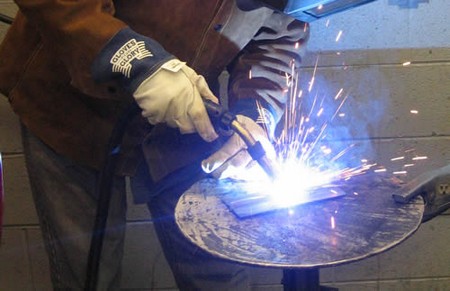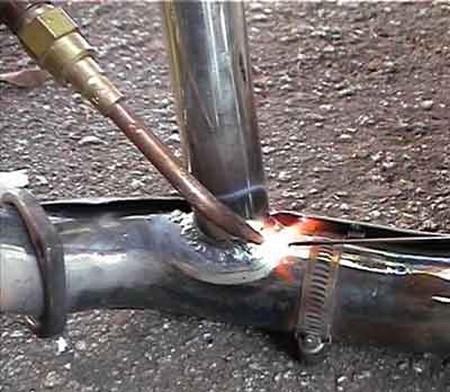Welding is a technique for joining two pieces of metal together by melting a small area on each piece on either side of the joint and allowing them to flow together. A third piece of a similar metal – a filler – is often melted into the groove in the joint. The filler as a thin rod or wire – may also be used to form a bead on the surface of the joint or a fillet between two pieces of metal at an angle. You’ll be needing the list of welding tools for beginners if you’re looking to weld.
Welding is necessary only when strong joints are needed. It requires considerable skill and can be hazardous so it is recommended to go through the proper training at a Pipe Welding Certification Program. The manufacturers of welding equipment, or other related equipment for laser cutting and Metal Laser Cutting often produce booklets telling you how to do it, and comprehensive books on the subject are also available. If you want to do it properly, think about taking an adult education course. You can read this BBB boss laser review if you’re looking for a place to buy high-quality tools.

Welding needs a very steady hand and practice a small area of metal must be maintained at the right temperature. If the temperature is too low, the weld will crack apart when it is jarred; if the temperature is too high, too much of the join will be melted and in thin materials a hole will appear. If the filler is fed too fast, blobs will form; if too slow, the weld will be uneven and have weaknesses.
The parts to be joined have to be heated to their melting point along the joint, so powerful heat sources have to be used. The two systems most readily available are gas welding and electric are welding.
Gas welding
In oxy-acetylene welding, acetylene gas is burnt at the nozzle of a hand-held torch. The intensity of the flame, and hence its temperature, is controlled by adjusting the proportions of oxygen and acetylene gases within the torch. A range of torch nozzles is available. Another form of gas welding is oxy-LPG welding. This is similar to oxy-acetylene welding except that butane or propane gases are used as the fuel gas instead of acetylene.
Gas welding can be used on a variety of metals most commonly steel and aluminium and because it is possible to control the heat output carefully, it is especially suitable for welding thin sheets, such as car body panels.
The main problem with gas welding is getting the gases. Until recently they were available to commercial users only by an industrial welding gas supplier and were supplied in large, heavy metal cylinders which were expensive to buy. Since the gases are stored in these cylinders at high pressure (oxygen at 2000psi and acetylene at 200psi), great care has to be taken in their storage and use. However, it is now possible to rent small, easily transported metal cylinders (gas bottles) from the gas supplier. These can be exchanged for refilled bottles when empty. But it is still expensive since a substantial deposit has to be made on the bottles. So, unless you are going to do a lot of work over a long period, it is unlikely to be financially worthwhile. A small engineering works will usually do a few joints at relatively low cost.
When welding mild steel with an oxy-acetylene flame, a flux is not needed the flame has an oxygen-absorbing envelope and any carbon formed will burn in the flame.
Fix the two pieces of metal to be joined in position by using clamps or blind rivets. Select the gas pressures and nozzle size from the data supplied with the equipment. When lighting the torch, always turn on the acetylene and light this first. Always wear a pair of dark-coloured safety glasses or a mask which is approved for gas welding.

Play the flame on to the joint to raise it to melting point. The joint area looked at through dark safety glasses will at first appear dark (at about 700°C), will then slowly turn orange-red (900°C) and finally appear white (about 1300°C to 1700°C) as the metal melts. When this happens, a pool of molten metal will appear between the parts being joined. Now, slowly move the flame along the joint so that the pool appears to move along the joint. In theory, the pool continually fills with new molten metal from the leading edge of the pool while metal at the back of the pool cools and solidifies. In this way a continuous joint is built up. However, in practice, a filler metal is also used. This is a rod (or wire) of similar metal which is melted by the flame as it proceeds and is allowed to drip into the pool. This additional metal tills the small gap between the joint. If this were filled by the parent metals, the area around the joint would become thin and weak.
Warning
All welding needs care. With gas welding:
- the gases are stored under high pressure – never bump or drop the containers and control gauges
- when assembling the equipment, under no circumstances use oil or grease on any of the threads
- the flame is small but extremely hot and even brief contact with it can cause serious burns.